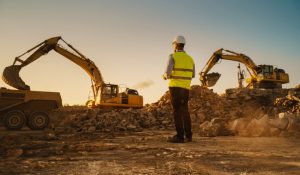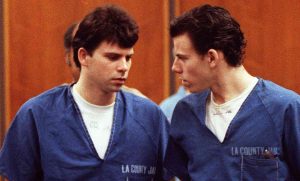Civil Engineer Gary Vaughan first became an Expert Witness without being aware of the fact that he was being relied upon as such in a civil dispute; two good clients of his had a falling out over the boundary between their respective properties and asked if he would help to map out the features and calculate some lines. Having helped resolved that dispute Gary decided to find out more about the role of an expert; he attended a number of training events and seminars on expert related topics and discovered he enjoyed the investigative nature of being an expert witness.
He discusses with us now where the legal sector can improve in the world of surveying, and the problems he overcomes as an Expert Witness.
What are common cases that you are involved in as an Expert Witness?
The areas in which I frequently provide expert opinion broadly speaking fall into two distinct areas: cadastral matters, i.e. those matters which are concerned with boundary demarcation, rights of way and extent of Highway etc.; the second area are matters regarding drainage and flooding. These two areas may seem to be quite different, but they both involve the expert interpretation of plans, technical drawings, diagrams and photographs. Typically, a very precise measured survey is required to establish the factual position of features which currently exist.
When dealing with such cases, have you ever noted common mistakes made by the parties, which if avoided, would avoid such disputes? If yes, what common mistakes are made?
There are a number of basic misconceptions which exist with respect to legal boundaries, the largest of these is probably a misunderstanding of the role of Land Registry and the significance of Ordnance Survey Mapping. It is extremely common for somebody to have taken the depiction of their property on Ordnance Survey mapping and to have concluded that the boundary is in the wrong place. The same can be said of Land Registry Title Plans (which for the most part are based on Ordnance Survey mapping). What the lay person fails to appreciate is that Ordnance Survey do not map legal boundaries, they map physical features; these physical features may or may not have relevance to the position of the legal boundary. Land Registry Title Plans rely on Ordnance Survey mapped features, thus it follows that the extent of a particular title on a Land Registry Title Plan can only ever be a general indication of the position of the legal boundary and not a precise line that could be mapped out on the ground and used as a legal boundary.
What are the common misconceptions lawyers have regarding boundary services?
The largest misconception that I have encountered in my particular sector of expertise is that legal practitioners do not always appreciate that the field of Surveying is a very wide field and that not all surveyors have the required skills to be able to address all matters. For example, if you have a boundary dispute concerning the position of a legal boundary within a building then the required skill set would need to include an understanding of building construction; a building surveyor would be ideally suited. If, however, the dispute involved farm land and the position of features such as hedges and ditches and watercourses, a building surveyor may not necessarily have the required skill set. All too often I have been involved in disputes over matters where the opposing expert has been selected with small regard for the particular nature of the dispute. Thus, in my experience the expert discussion and the production of a Joint Expert Statement can become protracted. This in turn has a direct bearing on costs.
To paraphrase, if you have a land dispute, make sure that you appoint a surveyor skilled in the measurement of land.
Using your expertise, in what ways do you like the legal sector needs to change in order to adopt to the requirements of your sector?
One of the trends I have noted in my particular sector of expertise is for ‘Questions to Expert’ to be more akin to a written form of ‘Cross Examination of Expert’. My understanding is that this is currently not allowed for under CPR35 without the written permission of the Court or the agreement of the opposing party. CPR 35.6 sets out that written Questions to Expert ‘must’ be for the purpose ‘only’ of clarification of the report. It is sometimes the case that a court may restrict the evidence of the expert to that of his or her written report.
‘Questions to Expert’ do not necessarily offer an opportunity to cross examine an expert and if the expert is not to give oral evidence there is no formal procedure set down in CPR to cross examine an expert witness in writing. The concept of cross examination by written questions seems to be evolving at this point in time (in my sector at least). My view on this immerging trend is that it makes the job of an expert more complicated and un-necessarily expensive. I have recently answered 32 ‘Questions to Expert’, thus producing a 22-page expert report in a contentious matter. Of the 32 questions put to me only four concerned matters of clarification of my report. The time taken to answer the questions was disproportionate to the length of the original report purely because the answers dealt with matters of cross examination rather than what is intended under CPR35.6. I believe there is growing issue here that needs addressing.
Is there anything else you would like to add?
I would like to thank the Academy of Experts for their support and training over the years. In my view the Academy provides excellent support to practicing experts and I have very much valued the informative publications and well organised training events that they have provided.




















